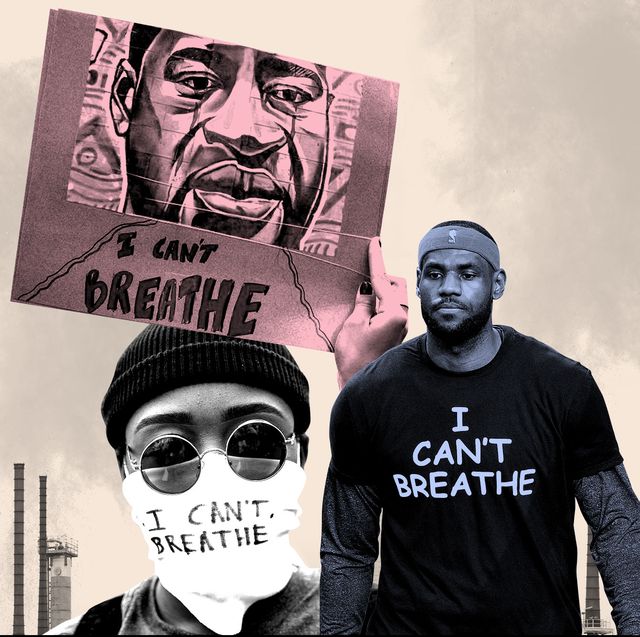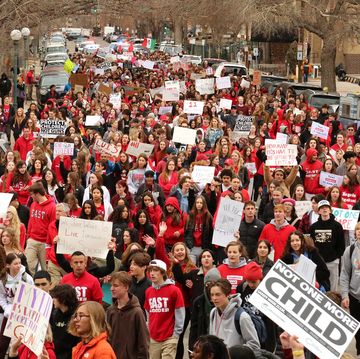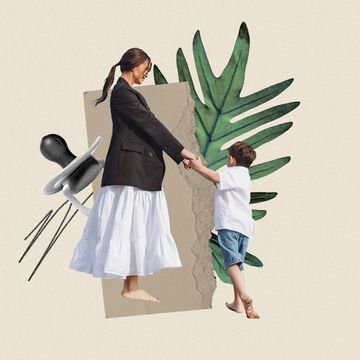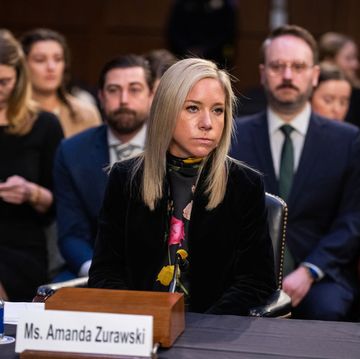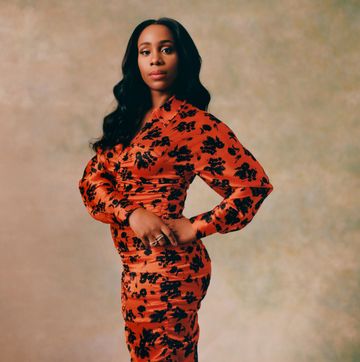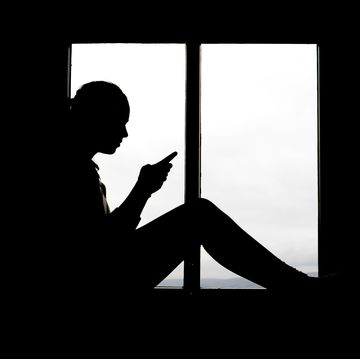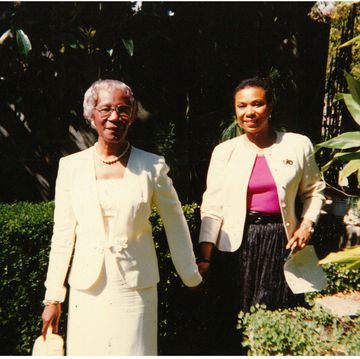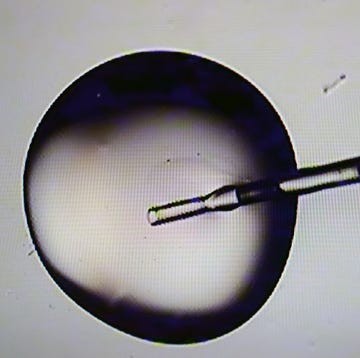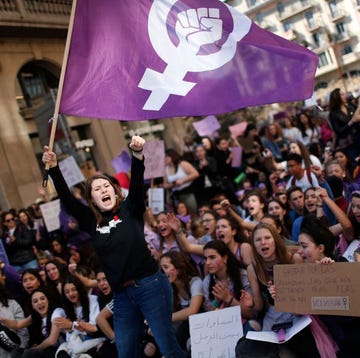“I can’t breathe.”
It’s been six years since we watched Eric Garner say those words on tape, his body trapped underneath the grip of a police officer. It’s been three months since we watched George Floyd do the same. Off camera, the phrase has taken on multiple meanings, as Black and brown communities struggle with the effects of the novel coronavirus and, long before that, the effects of the climate crisis. In the middle of three concurrent emergencies, "I can’t breathe" stands as a rallying cry, a request for the most basic of human rights. Because in 2020, for Black Americans, the right to breathe—and the ability to do so equally—is not guaranteed.
As a Black environmentalist, I find it impossible to separate my Blackness from my advocacy for our home planet. I’ve seen how social and environmental justice intersect with my own Black identity, how race plays a significant role in how BIPOC are able to safely experience the world around them. I’ve seen how these barriers—police brutality, environmental injustices, and health injustices—prevent Black people from not just living, but thriving.
Right now, we are living through the COVID-19 pandemic, a virus that has the ability to attack the respiratory system and cause breathing difficulties. And though we are all faced with the potential exposure to COVID, the reality is people of color have been disproportionately impacted in comparison to white Americans. Black Americans are dying from COVID-19 at more than twice the rate of white Americans, and it’s Black Americans who face bias in the healthcare system. Startling data from a 2019 Century Foundation report states: “Even with improved access to medical care under the ACA, the disparities in health outcomes between African Americans and whites are stark.” Black women are three times as likely to die of pregnancy-related causes in comparison to white women in the U.S., while Black infants face higher mortality rates.
But long before the pandemic, people of color were also dealing with another crisis impacting their health—environmental injustices. Systemic housing discrimination and practices like redlining have added to the climate burden in these communities. According to a report by The American Lung Association, 14 million people of color live in communities that are subjected to short- and long-term exposure to air and ozone pollution. This increased exposure to particulate matter and air pollution is linked to higher rates of cardiovascular and respiratory issues, leaving people even more vulnerable to viruses like COVID-19. An EPA report from 2018 revealed that Black Americans are more likely to live near landfills and industrial plants. As a result, a majority of Americans living near hazardous waste are people of color, and Black Americans are “three times more likely to die from exposure to air pollutants than their white counterparts,” according to Quartz.
And if health care and environmental justice disparities weren’t enough, America’s policing system has left us bracing for the next time we’ll witness a Black person taking their last breath on camera. In 2014, I was in my hometown of Florissant, Missouri, when Mike Brown, an unarmed Black teenager, was killed by a police officer just a few miles away in Ferguson. It was a moment that ignited the Black Lives Matter movement, which has now seen a resurgence after the killings of Breonna Taylor, George Floyd, Ahmaud Arbery, and so many others—six years later.
And just when I thought this summer’s protests would create real change, Jacob Blake was shot seven times by a Kenosha, Wisconsin, police officer. Though they tried to take his breath, the outcome of this instance of excessive violence was different; Blake survived and might be able to share his story to the world. Maybe then, justice will come.
Ultimately, all of this inequity continues to unfairly impact those who are most vulnerable. This is why intersectionality, a theory coined by Kimberlé Crenshaw, is such essential work. When time and time again BIPOC receive the brunt of social and environmental injustices at higher rates, we can’t pretend that the same systems of oppression aren’t at play. Racism and bias exist in several spheres, and it’s urgent to find solutions that guarantee everyone the right to breathe.
